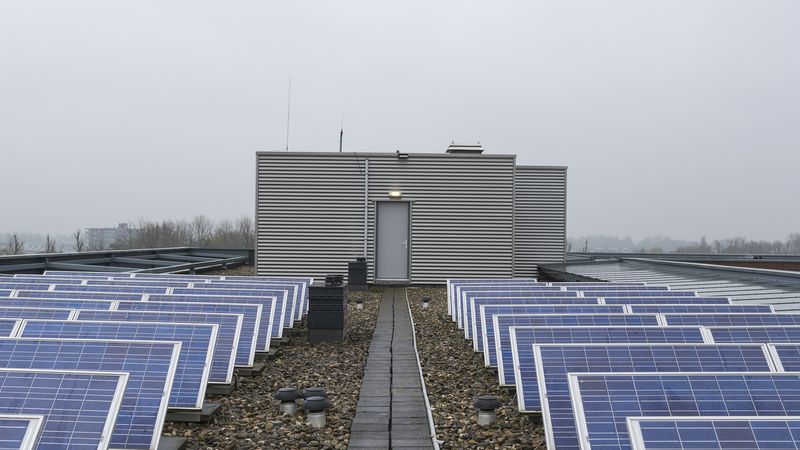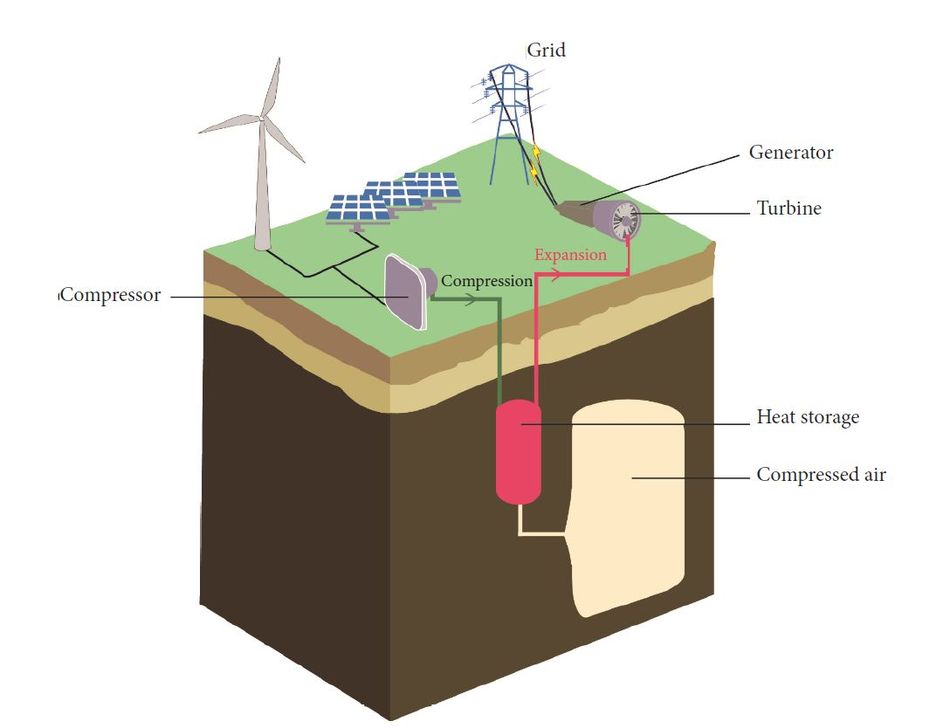Energy Storage System (ESS) Technologies Most Suitable for Renewable Energy Usage
Optimum solutions to store the clean energy generated by renewable sources has never been more accessible.

Energy storage systems, often referred to as ESS, play a fundamental role in helping with the intermittent nature of renewable energy and provide reliable supply of energy. In the recent year, the most commonplace energy storage technology has been battery energy storage (BESS) due to its shrinking costs and technological advances. However, ESS types do not end there. Although the majority of other such technologies are not currently commercially feasible and still developing, it is important to take stock of their progress and limitations.
When it comes to renewable energy production, wind and solar applications have become more ubiquitous in the last decade, accounting for a bigger chunk of the renewable energy mix. Due to the upward trend in global solar photovoltaic (PV) installations and technological progress, this article is mainly focused on relevant energy storage systems to solar and its applications, which can be divided into three main categories of:
- Utility: These systems are also referred to as grid-connected and they facilitate the backup of excess renewable energy through the grid, using an inverter. The inverter converts the DC output of the system to AC electricity in phase with the grid of the local power company. In case of shortage of renewable energy production, the local power company supplements the difference.
- Standalone: This is more of a common application in the industrial and residential context i.e.traffic lighting, remote site electricity generation, electric vehicle (EV), etc. This system directly deploys the energy generated without feeding the surplus back into the grid. The excess energy then is stored in an energy storage system, commonly a battery bank.
- Hybrid: The hybrid system, touted as the future of energy production, combines the integration of the above systems with other sources, for instance solar, wind and storage. Not only does this help create greater efficiency but also greater balance in supply.
Energy Storage System (ESS) Technology Types
The generated energy from the solar initially comes in the form of electricity and can either be stored directly in that form or converted to another form then stored. Now, what are some of the important ESS systems?
Mechanical Storage
As the name suggests, this ESS converts renewable energy into mechanical energy, which is then stored in one of the following forms: pumped hydro (PHS), flywheel energy (FESS) or compressed air energy (AES). Mechanical energy storage relies on kinetic forces to store the energy i.e. spinning a flywheel. As simple as the physics mechanical ESS sounds, the technologies enabling this type of storage is made up of advanced computer control systems and high-tech materials.
- Pumped hydro storage: PHS uses the potential energy of water in order to store electrical energy. When demand is low and the electrical energy output high, the water is pumped and stored in an upper body of water (i.e. pond or reservoir). This energy can then be released on demand and converted into electrical energy within a short span of time.The stored water volume in the upper body of water and the height of the waterfall directly influence the energy that is stored in PHS.
- Flywheel energy storage: Employing kinetic energy stored in a spinning mass (rotor), FESS accounts for low frictional losses. The flywheel acts as a motor and accelerates in a rotary motion, transferring its (rotational) kinetic energy into the storage. The amount of stored energy is proportional to the square of its rotating speed and inertia. The process that accelerates and decelerates the flywheel utilizes electricity, which can be provided by the renewable energy source.
- Compressed air energy storage: CAES is quite similar to pumped-hydro storage in its application. However, instead of pumping water to an upper reservoir in instances of power surplus, CAES deploys compressed ambient air or another type of gas and stores it in an underground container. The compressed air is heated when electricity is needed and expanded in a turbine, which drives a power production generator.
 Image courtesy of Planete Energies.
Image courtesy of Planete Energies.Electrical Storage

Electrical Storage
As suggested by the name, electrical storage systems store energy in electrical form instead of mechanical form, which was explained earlier. Some of the examples of this technology are supercapacitor ESS and superconducting magnet storage systems (SMES). Supercapacitor energy storage systems utilize one or more supercapacitors, which are defined as electrostatic capacitors with an energy density of roughly 10 to 100 times larger than electrolytic capacitors. Therefore, supercapacitor ESS is most suitable when a lot of charge-discharge cycles are required and not so much for long-term energy storage. Superconducting magnet storage system stores electrical energy in a magnetic field, and the electrical energy is produced via passing a direct current through superconducting materials (i.e. mercury) coil. SMES is more appropriate for short-term energy storage and their large capital cost makes them not economically viable for utility-scale projects.
Electrochemical Energy Storage System
Electrochemical storage systems are commonly known as Battery Energy Storage Systems (BESS) as they rely on rechargeable batteries to store energy. Overall, the rechargeable batteries with current applications fall into the following categories: lead acid, alkaline, silver, lithium, sodium-sulphur and flow batteries. The solar plus storage industry has been mainly dominated by lithium-ion batteries due to the accessibility and budget-friendly nature of the technology. However, other battery technologies such as flow batteries have made big strides.
All in all, the application of battery energy storage systems has witnessed an uprise, aided by their technological improvement and growing use cases. The research to improve the performance of these batteries will only continue to expand as they play a crucial role in realizing a clean energy future.
Sources & Further Reading
Review of energy storage services, applications, limitations, and benefits, October 2020,Dharik S.Mallapragadaa, Nestor A.Sepulvedaa, Jesse D.Jenkins, https://www.sciencedirect.com/science/article/abs/pii/S0306261920309028?via%3Dihub
Energy storage emerging: A perspective from the Joint Center for Energy Storage Research, June 2020, Lynn Trahey, Fikile R. Brushett, Nitash P. Balsara, Gerbrand Ceder, LeiCheng, Yet-Ming Chiang, Nathan T. Hahn, Brian J. Ingram, Shelley D.Minteer, Jeffrey S. Moore, Karl T. Mueller, Linda F. Nazar, Kristin A.Persson, Donald J. Siegel, Kang Xu, Kevin R. Zavadil, Venkat Srinivasan, George W. Crabtree, https://www.pnas.org/content/117/23/12550
